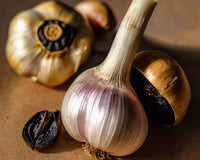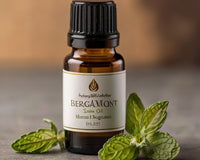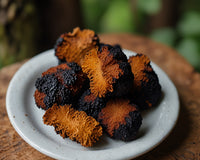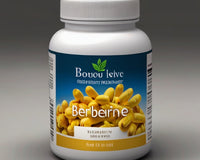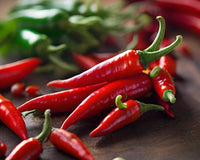What are tannins?
Tannins, also known as tannins , are bitter and astringent compounds that belong to a larger category called polyphenols. They occur abundantly in nature, i.e. in the bark of many trees and in various leaves, legumes and fruits.
Tannin molecules are generally much larger than those found in other types of polyphenols, and they have the unique ability to easily bind to other molecules (i.e., proteins), causing them to precipitate. This is the basis of leather production, in which the structure of animal skins is modified by using the bark of various trees.
What is the function of tannins?
Because tannins bind to other proteins, including those in human saliva, they produce a distinctive astringent, sticky mouthfeel in the mouth.
Their main role in nature is to make unripe fruits and seeds unpalatable, thus discouraging animals from eating them.
Where do the tannins in wine come from?
Tannins in wine mainly come from grape skins, seeds, and a small amount from grape stems. During the fermentation process, the juice, peel and core are macerated together. As the sugar is processed and alcohol is produced, color and tannins are released into the wine - alcohol will dissolve more tannins than water, so the longer the skins and pits are macerated during fermentation and fermentation, the better the final wine The more tannins there are.
Because white and rosé wines are fermented by eliminating or minimizing contact with grape components, they will have lower tannin levels than red wines. On the other hand, if a white wine is fermented with prolonged skin-to-stem contact (i.e., producing a so-called orange wine), the tannin content may be as high as that of a red wine. White wine contains similar structures to red wine's pigment tannins, but lacks anthocyanins (the compounds responsible for red pigmentation), which explains why they look different and don't impart the same color.
Tannins may also come from the wooden vessels in which the wine was fermented and/or aged. Wood imparts tannins and flavor to wine.
How to describe tannins?
Tannins can best be described by the tactile sensation they create – thinking more about mouthfeel than aroma or flavor. It's important to consider both their quantity and quality; whether more or less present, the structure of tannins can be very different and produce a very different sensation when you taste the wine.
There are two useful sets of descriptors that define tannins in terms of texture and ripeness.
Are the tannins soft, velvety, and silky? Or rough, grainy, chalky? These are examples of textural characteristics that reflect the sensation tannins cause in the mouth.
Speaking of ripeness, do they remind you of green, crunchy, unripe fruit? Or the juicy, smooth, sweet flesh? The nature of tannins is closely related to the ripeness of the grapes and, therefore, will reflect the nature of the fruity aroma of the wine.
Another important distinction is astringency versus bitterness. As already discussed, bitterness is a taste characteristic, while astringency is a textural sensation. Although tannins are not flavor compounds, they contribute to the perception of bitterness in addition to mouthfeel. This is especially true for young red and orange wines.
Which grapes have high tannin content?
Some grapes naturally have higher tannin levels than others. Generally speaking, since tannins are primarily found in the skins and seeds of each grape, varieties with thicker skins will likely produce wines with higher tannins. Varieties that are particularly high in tannins include Cabernet Sauvignon, Nebbiolo, Sangiovese, Malbec, Mourvèdre/Monastre, Syrah/Shiraz, Tannat and Tempranillo. Therefore, thin-skinned grapes such as Pinot, Gamay, and Grenache have lower tannin content.
The same goes for light-skinned grapes. Thick-skinned white varieties are also relatively high in tannins.
Nonetheless, the choice of growing conditions and winemaking process has a crucial impact on the formation and extraction of tannins and the actual tannin content in a particular variety of wine.
This explains the huge differences in wines produced from the same grapes from a specific region in different vintages. or expressions of the same variety from different growing regions. Take Barossa Shiraz and Rhone Shiraz for example. The former is likely made from riper fruit and has greater alcohol potential, resulting in soft, round, velvety tannins. The latter fruit, from the cooler banks of the Rhone, is less ripe and has less ripe tannins, resulting in a grainier, more angular taste.
In winemaking, decisions like fermentation temperature, maceration time (how long the juice is in contact with the grape skins), the number and strength of pressings, and even the type of yeast used can all have an impact on the amount of tannin extracted from the grapes and soaked into the wine.
Do tannins help wine age?
Tannins do play an important role in the wine aging process. The evolution of grape tannins and wood-imparted tannins over time results in changes in aroma, flavor and textural characteristics. The nature and quantity of tannins change naturally: tannin molecules gradually aggregate (combine to form larger chains) and eventually precipitate as sediment.
Once polymerized, tannins no longer produce any bitter or astringent effects. But as a key structural component, the presence of tannins will make the wine last longer - the "grip" caused by tannic astringency will make the wine feel "fresher" as the main fruit aromas will disappear.
Which foods are high in tannins?
Tannins are mostly associated with wine, including red wines and skin-infused white wines (so-called orange wines). But you can also easily find them in tea, coffee, and dark chocolate. Although present in many fruits (i.e. grapes), nuts, spices, and legumes, their concentrations are much lower and therefore less noticeable.
But try oversteeped black tea and you'll effortlessly recognize the characteristic astringency of tannins.

